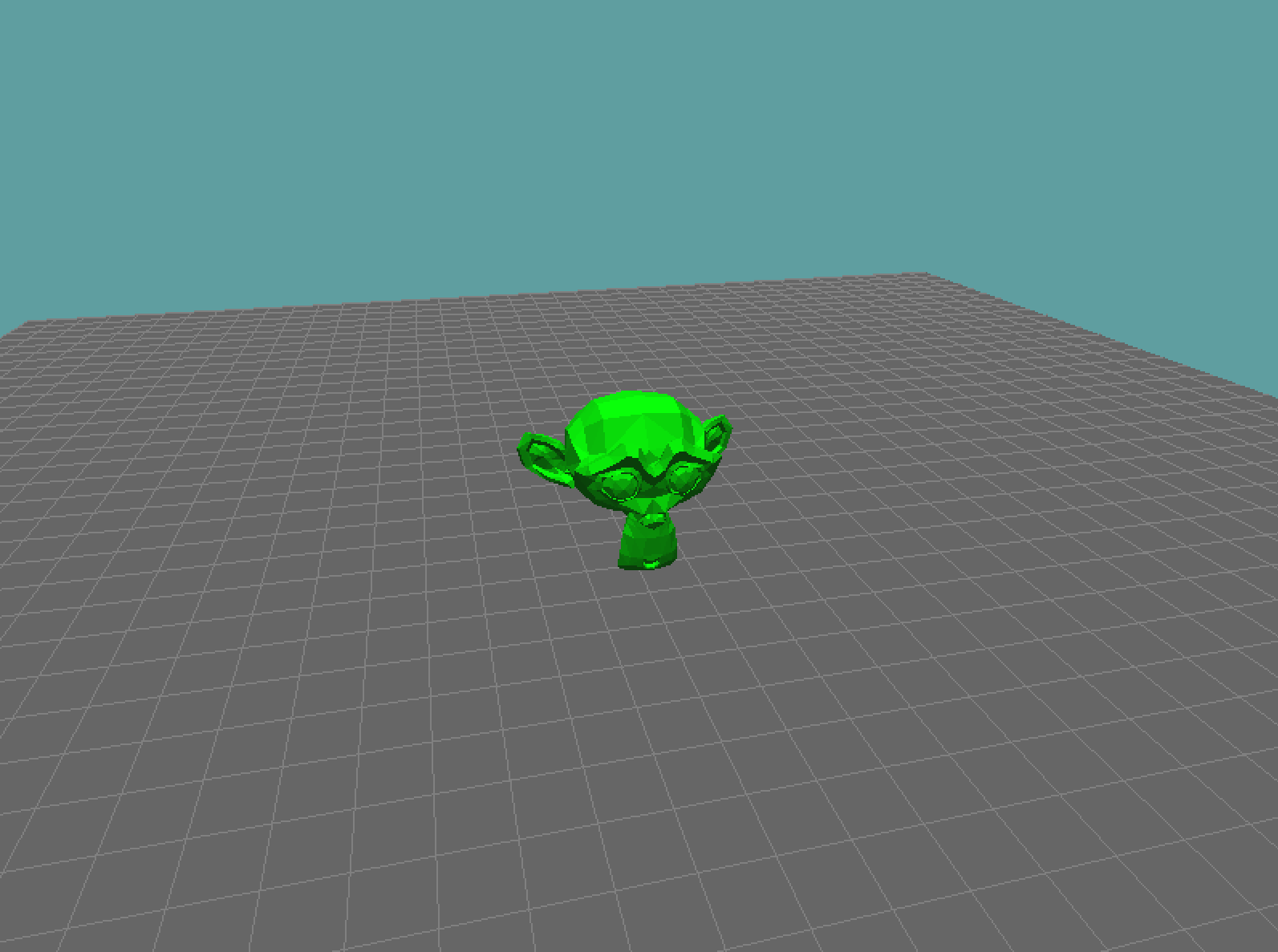Test it
With your new OBJ class loading and presumably rendering primitives it's time to take it for a spin. I'm going to provide a test scene, download this file and put it in assets to test with.
using System;
using OpenTK.Graphics.OpenGL;
using Math_Implementation;
namespace GameApplication {
class OBJLoadingExample : Game {
Grid grid = null;
OBJModel model = null;
protected Vector3 cameraAngle = new Vector3(0.0f, -25.0f, 10.0f);
protected float rads = (float)(Math.PI / 180.0f);
public override void Resize(int width, int height) {
GL.Viewport(0, 0, width, height);
GL.MatrixMode(MatrixMode.Projection);
float aspect = (float)width / (float)height;
Matrix4 perspective = Matrix4.Perspective(60.0f, aspect, 0.01f, 1000.0f);
GL.LoadMatrix(Matrix4.Transpose(perspective).Matrix);
GL.MatrixMode(MatrixMode.Modelview);
GL.LoadIdentity();
}
public override void Initialize() {
GL.Enable(EnableCap.DepthTest);
GL.Enable(EnableCap.CullFace);
GL.Enable(EnableCap.Lighting);
GL.Enable(EnableCap.Light0);
Resize(MainGameWindow.Window.Width, MainGameWindow.Window.Height);
grid = new Grid(true);
model = new OBJModel("Assets/test_object.obj");
GL.Light(LightName.Light0, LightParameter.Position, new float[] { 0.0f, 0.5f, 0.5f, 0.0f });
GL.Light(LightName.Light0, LightParameter.Ambient, new float[] { 0f, 1f, 0f, 1f });
GL.Light(LightName.Light0, LightParameter.Diffuse, new float[] { 0f, 1f, 0f, 1f });
GL.Light(LightName.Light0, LightParameter.Specular, new float[] { 1f, 1f, 1f, 1f });
}
public override void Shutdown() {
model.Destroy();
}
public override void Update(float dTime) {
cameraAngle.X += 30.0f * dTime;
}
public override void Render() {
Vector3 eyePos = new Vector3();
eyePos.X = cameraAngle.Z * -(float)Math.Sin(cameraAngle.X * rads) * (float)Math.Cos(cameraAngle.Y * rads);
eyePos.Y = cameraAngle.Z * -(float)Math.Sin(cameraAngle.Y * rads);
eyePos.Z = -cameraAngle.Z * (float)Math.Cos(cameraAngle.X * rads) * (float)Math.Cos(cameraAngle.Y * rads);
Matrix4 lookAt = Matrix4.LookAt(eyePos, new Vector3(0.0f, 0.0f, 0.0f), new Vector3(0.0f, 1.0f, 0.0f));
GL.LoadMatrix(Matrix4.Transpose(lookAt).Matrix);
GL.Disable(EnableCap.Lighting);
GL.Disable(EnableCap.DepthTest);
grid.Render();
GL.Enable(EnableCap.DepthTest);
GL.Enable(EnableCap.Lighting);
GL.Color3(1f, 1f, 1f);
model.Render(true, false);
}
}
}
If your OBJ loads and renders properly, the above scene should look like this, with a rotating camera:
